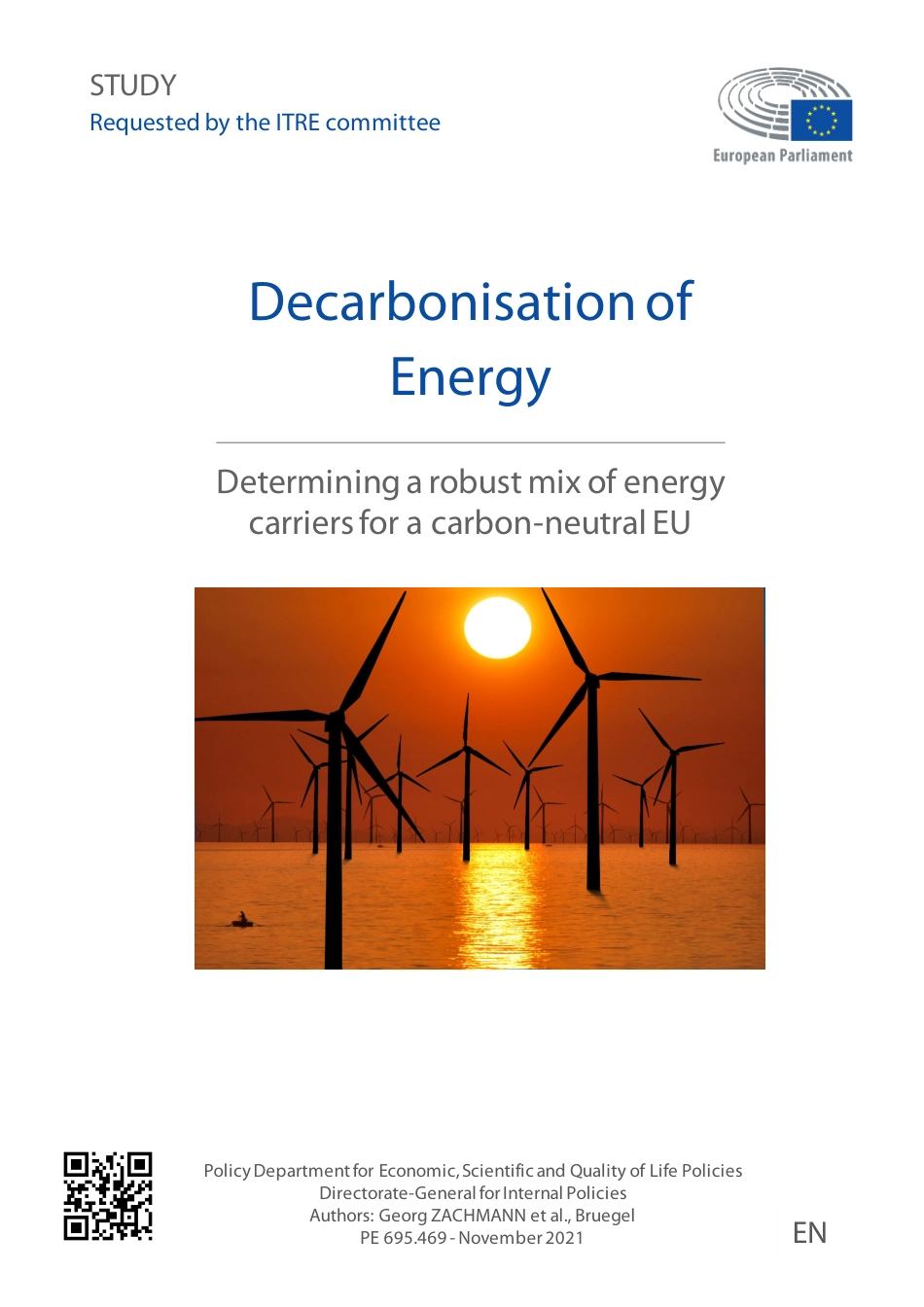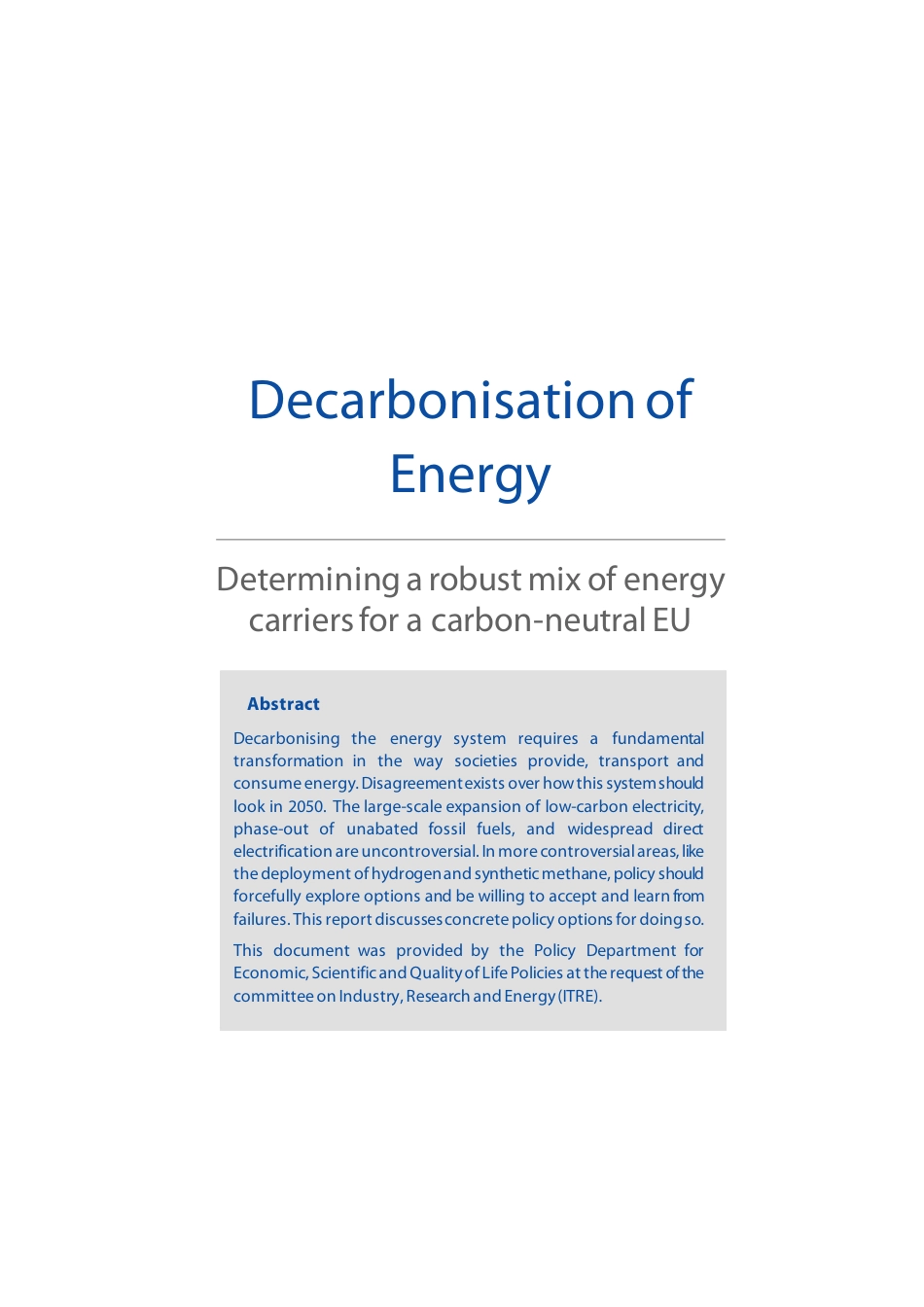Decarbonisation of Energy Determining a robust mix of energy carriers for a carbon-neutral EU STUDY Requested by the ITRE committee Policy Department for Economic, Scientific and Quality of Life Policies Directorate-General for Internal Policies Authors: Georg ZACHMANN et al., Bruegel PE 695.469 - November 2021 EN DO NOT DELETE PAGE BREAK Abstract Decarbonising the energy system requires a fundamental transformation in the way societies provide, transport and consume energy. Disagreement exists over how this system should look in 2050. The large-scale expansion of low-carbon electricity, phase-out of unabated fossil fuels, and widespread direct electrification are uncontroversial. In more controversial areas, like the deployment of hydrogen and synthetic methane, policy should forcefully explore options and be willing to accept and learn from failures. This report discusses concrete policy options for doing so. This document was provided by the Policy Department for Economic, Scientific and Quality of Life Policies at the request of the committee on Industry, Research and Energy (ITRE). Decarbonisation of Energy Determining a robust mix of energy carriers for a carbon-neutral EU This document was requested by the European Parliament's committee on Industry, Research and Energy (ITRE). AUTHORS Georg ZACHMANN, Bruegel Franziska HOLZ, DIW Berlin Alexander ROTH, DIW Berlin Ben MCWILLIAMS, Bruegel Robin SOGALLA, DIW Berlin Frank MEISSNER, consultant Claudia KEMFERT, DIW Berlin ADMINISTRATORS RESPONSIBLE Frédéric GOUARDERES Matteo CIUCCI EDITORIAL ASSISTANT Irene VERNACOTOLA LINGUISTIC VERSIONS Original: EN ABOUT THE EDITOR Policy departments provide in-house and external expertise to support European Parliament committees and ...



